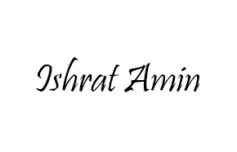Looking for the perfect savings account that suits your financial goals and needs? You’ve come to the right place! In this article, we will provide you with valuable tips for choosing the right savings account. Whether you’re a first-time saver or looking to switch banks, we’ve got you covered. From interest rates to fees and benefits, we’ll help you navigate the world of savings accounts and make an informed decision. So, let’s dive in and explore the essential factors to consider when selecting the ideal savings account for your money.
Tips for Choosing the Right Savings Account
When it comes to saving money, finding the right savings account is crucial. But with so many options available, how do you know which one is the best fit for your needs? In this article, we will explore some key tips to help you choose the right savings account to meet your financial goals.
1. Determine Your Savings Goals
Before you start searching for a savings account, it’s essential to determine your savings goals. Ask yourself the following questions:
- What are you saving for? Is it a short-term goal like a vacation or a long-term goal like buying a house?
- How much money do you plan to save? Do you have a specific target amount or a monthly savings goal?
- What is your time frame for achieving your savings goals? Are you looking to save for a few months, a year, or even longer?
Having a clear understanding of your savings goals will help you choose the right savings account that aligns with your needs.
2. Consider the Interest Rate
One of the most important factors to consider when choosing a savings account is the interest rate. The interest rate determines how much money your savings will earn over time. Look for a savings account that offers a competitive interest rate to maximize your earnings.
- Do some research and compare interest rates offered by different banks or financial institutions.
- Consider whether you prefer a fixed interest rate or a variable interest rate.
- Check if the interest is compounded daily, monthly, quarterly, or annually. Compounding frequently can help your savings grow faster.
3. Evaluate Fees and Charges
While interest rates are important, it’s equally crucial to consider any fees or charges associated with the savings account. Some common fees to watch out for include:
- Account maintenance fees
- Transaction fees
- ATM withdrawal fees
- Overdraft fees
It’s important to read the account terms and conditions carefully to understand what fees may apply. Look for a savings account with minimal fees to avoid unnecessary charges that could eat into your savings.
4. Assess Accessibility and Convenience
Consider how easily you can access your savings when you need them. While it’s crucial to save money, it’s also important to ensure that your savings account provides you with the convenience you require.
- Check if the savings account offers online or mobile banking options, allowing you to manage your account from anywhere.
- Consider if the bank has a network of ATMs that you can use without incurring additional fees.
- Look into the availability of customer service and support. Can you easily reach out to a representative in case you need assistance?
5. Examine Account Minimums and Requirements
Different savings accounts have varying minimum balance requirements. It’s important to consider whether you can meet those requirements and if they align with your savings goals.
- Check if there is a minimum deposit required to open the account.
- Consider the minimum balance required to avoid monthly fees or penalties.
- Assess if there are any limitations on the number of withdrawals or transactions you can make per month.
Understanding these requirements will help you find a savings account that fits your financial situation and avoids any unnecessary penalties or fees.
6. Research the Bank or Financial Institution
Before opening a savings account, it’s important to research the bank or financial institution offering the account. Consider the following factors:
- Check the bank’s reputation and financial stability. Look for customer reviews and ratings to get a sense of their reliability.
- Examine the bank’s customer service and support options. Do they have a responsive customer service team?
- Investigate the bank’s history of interest rate changes. Have they been consistent with their rates?
- Consider the bank’s other products and services. Do they offer additional financial tools that may benefit you in the future?
Choosing a well-established and trustworthy bank or financial institution will provide you with peace of mind and ensure that your savings are in good hands.
7. Seek Additional Account Benefits
While interest rates and fees are essential, it’s worth exploring any additional benefits or features that come with the savings account. Some beneficial features to look out for include:
- Automatic savings plans that help you regularly save a specific amount.
- Linked accounts that offer perks like fee waivers or higher interest rates when combined with other accounts.
- Rewards programs that allow you to earn extra incentives for reaching savings milestones.
- Financial education resources or tools to help you better manage your savings and achieve your goals.
These additional benefits can enhance your savings experience and make a positive impact on your financial journey.
Choosing the right savings account is a crucial step towards achieving your financial goals. By considering factors such as savings goals, interest rates, fees, accessibility, account requirements, the bank’s reputation, and additional benefits, you can make an informed decision. Remember, everyone’s needs are different, so take the time to evaluate your options and find the savings account that best suits your unique circumstances. Start saving today and watch your money grow over time!
3 Types of Savings Account That You Need
Frequently Asked Questions
Frequently Asked Questions (FAQs)
What factors should I consider when choosing a savings account?
When choosing a savings account, it’s important to consider factors such as interest rates, fees, minimum balance requirements, accessibility, and additional features like online banking or mobile apps.
How do I know which savings account is the right fit for me?
The right savings account for you will depend on your personal financial goals and preferences. Assess your needs and compare different account options to find one that offers the best combination of benefits and features that align with your requirements.
What is the difference between a traditional savings account and a high-yield savings account?
A traditional savings account typically offers lower interest rates but may have fewer requirements and fees. On the other hand, a high-yield savings account usually provides higher interest rates, but often comes with certain conditions like higher minimum balances or limited withdrawal options.
What fees should I be aware of when choosing a savings account?
Common fees associated with savings accounts include monthly maintenance fees, overdraft fees, ATM fees, and fees for certain transactions or services. It’s crucial to review the fee schedule of each account you’re considering to ensure they align with your financial needs.
How important is the interest rate on a savings account?
The interest rate on a savings account determines how much your savings will grow over time. Even a small difference in rates can have a significant impact on your earnings. It’s generally advisable to choose an account with a competitive interest rate to maximize your savings.
Should I consider online banks for my savings account?
Online banks can offer higher interest rates and lower fees compared to traditional brick-and-mortar banks. They often provide convenient digital tools and 24/7 access to your accounts. However, ensure you are comfortable with online banking and consider factors like customer support and deposit insurance before making a decision.
Are there any risks associated with a savings account?
Savings accounts are generally considered low-risk since they are insured by the Federal Deposit Insurance Corporation (FDIC) in the United States. However, it’s essential to carefully review the terms and conditions of the account you choose and be aware of any associated risks, such as fees or penalties for early withdrawals.
Can I have multiple savings accounts?
Yes, you can have multiple savings accounts to separate different financial goals. Having multiple accounts can help you track your progress more effectively and allocate funds for specific purposes such as emergency savings, travel, or down payment for a house.
Final Thoughts
When choosing the right savings account, consider your financial goals and needs. Evaluate the interest rates offered by different banks and financial institutions. Look for accounts with low fees and minimum balance requirements. Understand the terms and conditions, including withdrawal restrictions and penalties. Consider the convenience of online banking options and customer service. Research and compare different savings accounts to find the one that aligns with your preferences and offers the best benefits. By following these tips for choosing the right savings account, you can make a well-informed decision that helps you manage your finances effectively.

